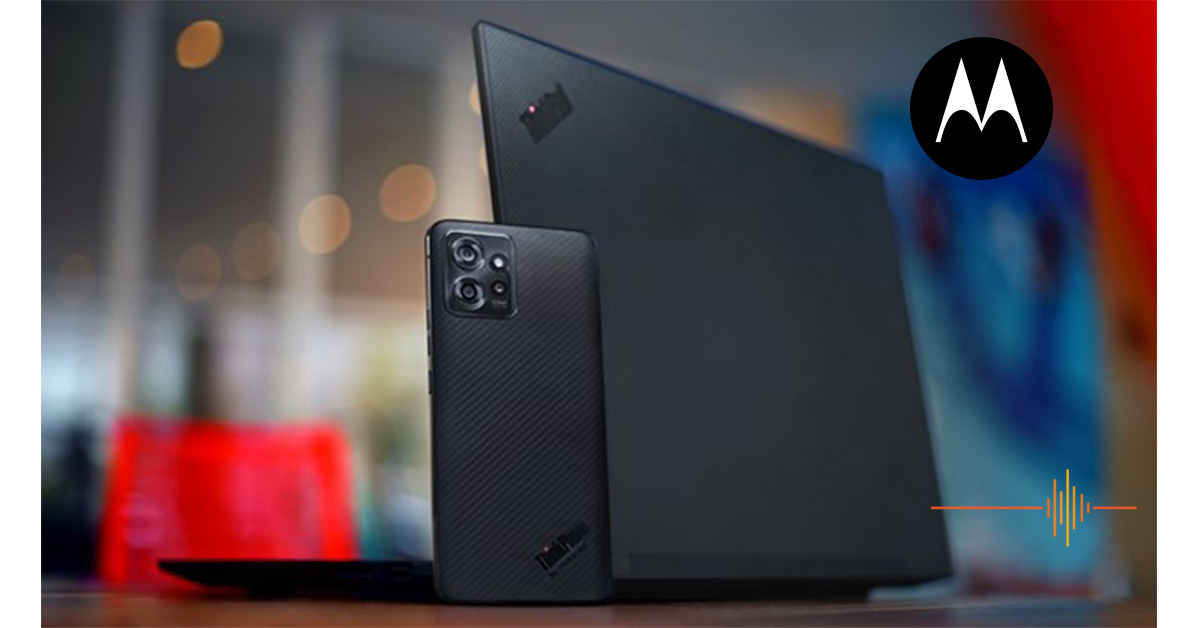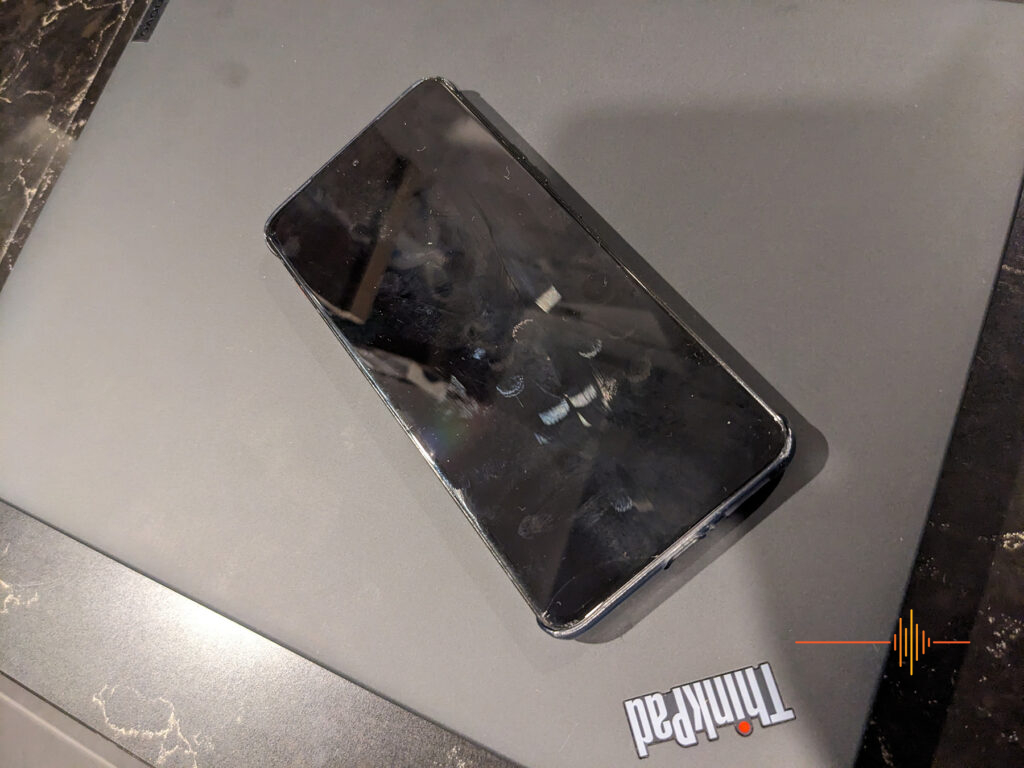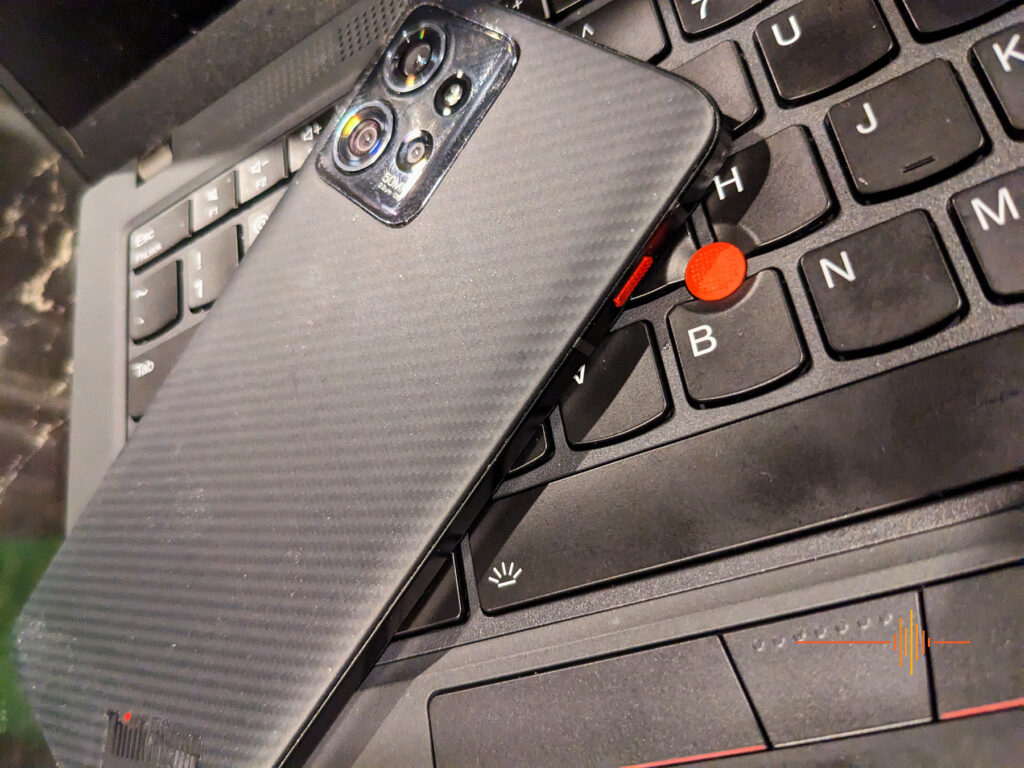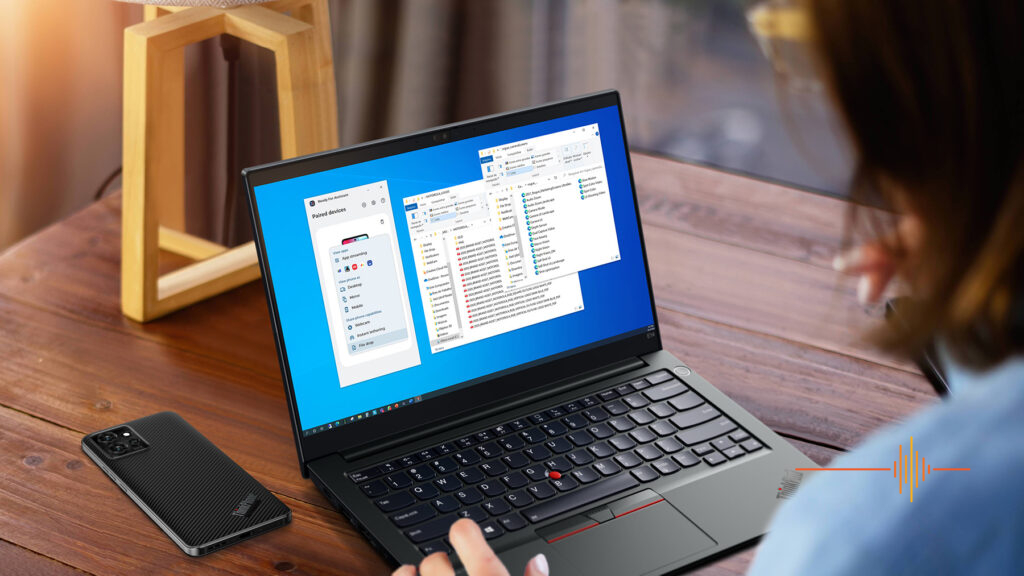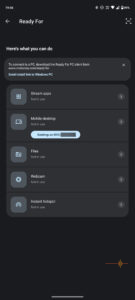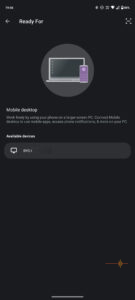Motorola has been in the news with their razr range, but is there still a place for the slab? We got to put the Motorola ThinkPhone to the test with thanks to Motorola.
The ThinkPhone is Motorola’s push to make inroads into the enterprise segment, but making it available direct to consumers rather than a B2B model. There is a tie in to the Lenovo ThinkPad, which is arguably one of the better notebooks available on the market.
Editor’s note: This review was written by my teenage son under my mentorship.
Lenovo + Motorola
There is method in the madness because Motorola is a subsidiary of Lenovo, and it is logical to breed synergy between the two. The recent trend from Motorola is a departure from the affordable mid-range line into the more competitive top end.
The Basics
Marketing states that the ThinkPhone is designed with a lightweight aramid fiber, an aircraft-grade aluminium frame and Gorilla Glass Victus. Well aramid fiber is essentially Kevlar which is the better known name trademarked (amongst others) by DuPont. Unless you’ve been living as a hermit in a cave for the past 6 decades, then you would know Kevlar is probably best known for body protection / armour. So what better material to protect your phone when it is cut-resistant and impact-resistant?
It has a IP68 certification which is maximum rated protection from small solid ingress – impervious to dust, and tested to withstand submersion in water up to 1.5 meters deep for 30 minutes. It doesn’t mean you can take a Karcher to it though …
First impressions
When you think work phones, it is hard to avoid thinking of bulky bland soulless phones manufactured on mass for handing out to staff for mishandling and loss.
Motorola bucks the trend with a svelte thin design. Dimensions wise it is 158.8 x 74.4 x 8.3mm which felt great in the hand without being too large or too small.
The concession to the corporate ghoul is the Volcano Grey (black in any other words) colour, but this is offset by the carbon fiber weave pattern on the back cover. I call it a carbon fiber weave as the majority can immediately picture it. As mentioned earlier it is made from aramid fiber.
If you are really curious about the difference, aramid fibre has a lower tensile strength than carbon fibre, and is not used for rigid structures such as aircrafts, supercars and ill-fated submarines. Thanks for listening to that nano-Tedtalk.
The overall build of the phone is solid, it feels very smooth and lightweight. Easy to pocket, easy to use.
There is a slight bump with the camera module, which is a mainstream design now. There is nothing fancy about it, just a squarish block with two larger lenses in a column and a third smaller lens and flash to the right of it.
The single splash of colour comes in the form of a red button on the left side of the phone.
Volume buttons and power button is on the right side of the device, speaker, USB-C and SIM slots are all on the bottom edge. As is the case with flagship phones, there is nary a 3.5mm port in sight.
The ThinkPhone sports a 6.6-inch pOLED screen featuring a 2,400-by-1,080-pixel resolution for a pixel density of 402ppi. The bezels are miniscule to maintain the sleek overall look of the device.
Setup
Getting setup on the phone is simple with Android setup wizard.
However the ThinkPhone takes it a step further at the first start up showing you a list of useful features, widgets and motions that you can set up to customise the phone to be “just yours”. It is handy because you can do it right away instead of having to find your way through the settings to set them up later.
That red button I mentioned earlier? It can be customised to launch an app, or app feature on a single press, and a ThinkPad integrated feature with double press.
The phone supports both face and fingerprint unlock, making it convenient to use. Remember when you had a phone with just face unlock and you had a mask mandate?
Display and Interface
Motorola has stepped up to the plate with a 144Hz refresh rate, which puts the ThinkPhone ahead of many competing flagships at 120Hz. The touch sampling rate is 360Hz which again is one upping competitors.
As a result, using the touchscreen is a sublime experience with silky smooth response and no lag to the feedback.
It is doable to use the phone in direct sunlight as the screen brightness is decent. It isn’t perfect but definitely serviceable.
Like any Android phones, the interface can be customised to your heart’s content.
Sound Quality
Music is important to me, so the sound quality is something I look for. Admittedly I a;ways have my favourite noise cancelling headphones on so the onboard speakers are not my first priority.
As mentioned before, there is a downward firing speaker at the bottom of the phone. A second speaker is positioned at the top of the display. In combination these two generates Dolby Atmos stereo sound and is actually pretty great. No they won’t compare to your top of the line home theatre system, but for a phone it is actually rather impressive and loud without distortion.
There is an equaliser app to tune your sound profile with plenty of preset defaults as well as changing the bass, treble, or even single out the vocals of music and other sounds played from your device.
Call Quality
The sound is good but there were issues with connectivity. It may have been an issue with my network, but on multiple occasions I have connected a call but can’t hear the other side although they can hear me properly. To fix it I have to hang up and redial the number which is annoying.
Battery life and Charging
What good is a work phone if it dies halfway through the morning?
Motorola has packed in a 5000 mAH battery into the body of the phone. I wish more flagship phones would pack these kind of high-capacity cells.
Being a music loving teenager, I can’t go without my music. I am constantly listening to my Spotify, messaging friends and doom scrolling through feeds. Even with this high level of usage patterns, I find the ThinkPhone easily last me over a full day of use – that is listening to music walking to school, during study time, coming home, off to work and listening to music during my shift and finishing around midnight. There is still plenty of juice left over.
The included charger (how novel!) pairs with the Motorola 68W TurboPower charging, and the 5000 mAh battery will go from 0 to 100 in around 50 minutes. That is mighty impressive! The blurb says 15 minutes charge will bring you to 28%, which is 1400 mAh or around 50% charge for an average flagship.
There is support for wireless charging, but you are limited to 15W and it does not come with it wireless charging puck. That is an optional extra.
Camera
The imaging suite includes a
- 50MP main camera at f/1.8 and optical image stabilisation
- 13MP ultra-wide with macro at f/2.2
- 2MP depth sensor at f/2.4
- 32MP selfie camera around the front
[Kevin] I am going to put it upfront, I never particularly fancy depth sensors on phone cameras. They sound like fun but invariably does little in the way of real results. Many flagships have dropped it in favour of something else.
The rest of the imaging suite is suitably decent, in that it is a hell of an overkill to just take photos of receipts.
The quality of the photos are excellent but not spectacular. There is no comparison to a DSLR, or even the Pixel line where Google has invested immense effort into their image processing.
In well-lit scenes the colour reproduction looks lush with good details and contrast. There is some softness and graininess if you look closely into the details.
In low light scenes the main camera is a bit of a bust with it noticeably struggling with contrasts. Lights sources and shadows all suffer, as well as loss of details. It is marginal at best and to be fair, many competitors struggle to strike a balance here too.
In comparison, selfies are quite decent in both well-lit and dimmer scenes. Colour reproduction in night scenes and screen flash leaves lots to desire but again, hardly a surprise.
The camera app have plenty for play with, including a pro mode that provides full control over white balance, ISO, autofocus, shutter speed, exposure compensation and a histogram thrown in for good measure. For the standard user, camera modes are organised in a carousel which is user customisable and a hamburger menu to the right side hiding the less used shooting modes.
Enterprise features
One of the key features of of the ThinkPhone is Motorola’s Ready For PC program. It is a suite of continuity features that work with Windows PCs and the Lenovo ThinkPad range. There is a shared design language with the black look and the red button on the ThinkPhone, and the signature red TrackPoint on the ThinkPad.
In a nutshell, Ready For connects your phone to any monitor or display, as long as it supports Miracast or HDMI or USB-C video-in port.
There is a piece of software to download and install from Motorola’s website, and the software suite:
- enables phone apps to run on the PC
- use the phone as a webcam in meetings
- use a shared clipboard to copy and paste between the two
- transfer files seamlessly
I rock a ThinkPad T14 Gen 3 for school and initially I struggled to get a reliable connection between the phone and the computer. Our old router was pretty flaky on a good day, and the library wifi was never the best idea.
After we swapped out our router for a significantly more robust unit, the Ready For connection just works.
I could happily mirror my phone to my laptop and control it using my computer.
I could also seamlessly connect to my device file system and it just pops up on Windows Explorer where I can drag and drop files. This feature I absolutely love, being able to move my school work between devices with minimal effort.
Accessories
The Motorola ThinkPhone bucks the industry trend for flagship phones and include a number of accessories.
First up is the TurboPower charger and cord.
In the box it comes with a pair of wired ear buds as well as gels in different sizes.
A phone case is included so your phone is protected from the moment you own it, and a sim card removal tool.
Gripes
The camera quality does tend to drop when using the camera feature on different social media apps such as Tiktok, Snapchat or Instagram. When using the camera feature on these apps the brightness of the image or video does tend to go up significantly even when using low exposure filters on applications. The quality of the image or video is not as smooth.
The Ready For suite wasn’t smooth initially, but a bit of backend changes and more testing it came good.
The included phone case is pretty thin and is prone to chipping if you do take it on and off frequently.
Conclusions
The Motorola ThinkPhone has all the makings of a flagship competitor with three years of major OS update and four years of security updates. How responsive Motorola to the patches remains a question but it would be a crucial one in the enterprise space.
Coming in at AUD$999, it sits between the Pixel 7 and Pixel 7 Pro, which are both competitors but with rock solid support from Google. But what is going for it is the brilliant battery life, 68W wired charging speed, a premium screen and an attitude to achieve.
To be honest, the Motorola ThinkPhone is quite a surprise entry, and hopefully this is a sign that they intend to be more serious player in the premium space. Just to remind you, the Korean behemoth flagship is about double in price. It is available from JB Hi-Fi and from the Lenovo website.
DRN would like to thank Motorola for providing the review unit.


